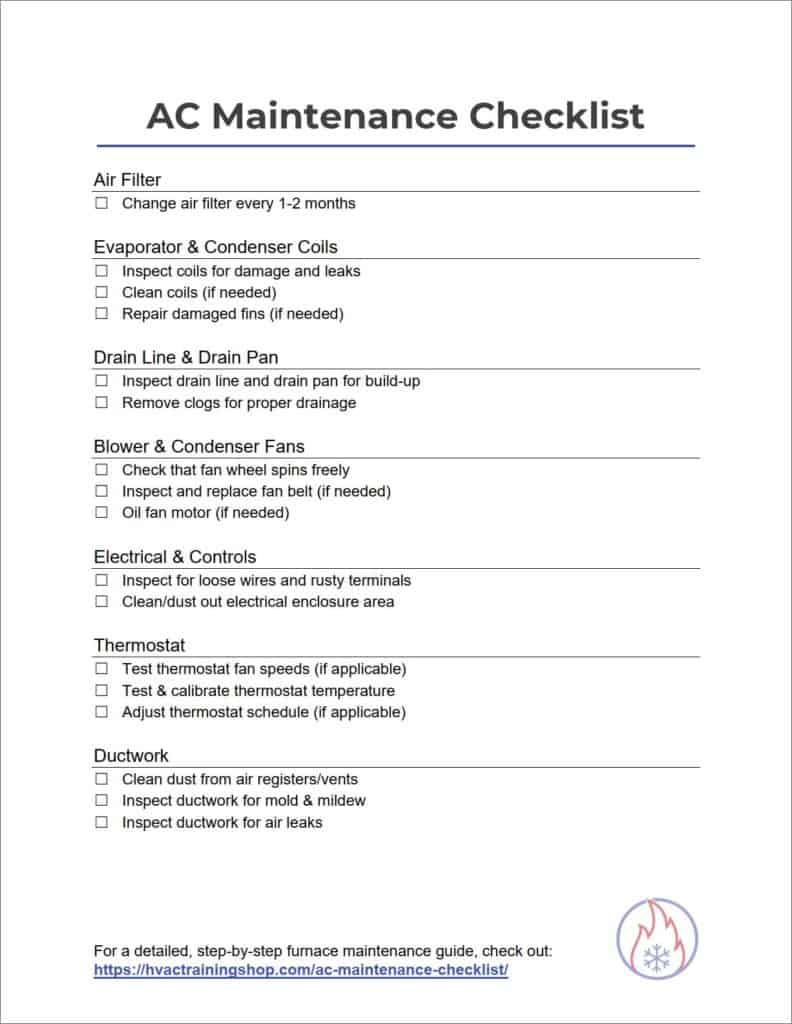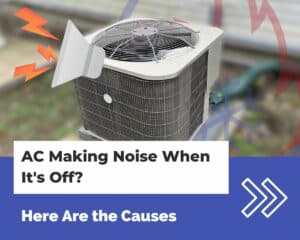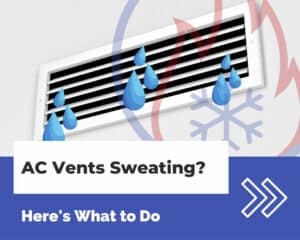HVAC Training Shop is reader-supported. As an Amazon Associate, I earn from qualifying purchases.
Preventive maintenance is important to keep your home’s air conditioning system running correctly and efficiently. During warm months, your air conditioner will be in heavy use, so it is important to keep it maintained.
There are a few things that you can do yourself without calling a service technician. If you are a homeowner, it is important to be familiar with your AC system so you can catch problems before they happen. You don’t want your AC to fail when it is needed most.
If you’re looking for a checklist that can you fill in or print out, check out my AC maintenance checklist pdf.
AC System Maintenance Checklist
Below is a list of maintenance items that you should conduct on your AC system at least once a year. The only exception is changing the air filter, which you should do at least every 1-2 months, or as needed.
1. Replace Air Filter
Air filters should be replaced every 1-2 months.
2. Clean evaporator and condenser coils
Dirty coils reduce the efficiency of your air conditioner.
3. Inspect and clean drain line and drain pan
A clogged drain line or drain pan will cause a huge mess.
4. Lubricate blower and condenser fans
Fans should rotate freely and need some oil to do so.
5. Inspect electrical wirings and controls
Loose connections can cause equipment failure or fires.
6. Check thermostat for proper operation
The thermostat should control the AC unit properly.
7. Inspect and clean air registers and ductwork (if needed)
Dusty air registers reduce airflow.
While you are in the process of checking out your AC system, be sure to look out for any loose parts or screws. Check the panels and case of your AC unit for any damage. A loose or damaged panel can cause problems such as high humidity or air leaks. Also check that your equipment is mounted on a sturdy, secure surface.
Be sure that your AC equipment is clear of any obstructions. Remove any plants or grass that gets in the way of your condenser or outdoor unit. Keep your air handler or indoor unit clear of any barriers such as boxes or other things you store in your garage/basement.
AC Filter Maintenance
Maintaining the filter on your air conditioning unit is the simplest task that you can conduct as a homeowner. Most filters are disposable, so filter maintenance is as easy as removing the old filter and replacing it with a new one.
You should replace your filters AT LEAST every 3 months (90 days). If you use thinner, non-pleated air filters (such as plastic or fiberglass), then you should change those every 1 month (30 days). Depending on if you have pets, allergies, or live in a dusty area, you may want to inspect and change your filters even more often.
To change your filter, first, turn off your HVAC system. Next, open the filter access panel on your air handler. Next, carefully remove the filter from the unit. Be careful when removing the filter to not let any dust or debris fall off. After disposing of the old filter, replace it with a new one.
Take note that the filter has a front and back, so it goes in a certain direction. Some air filters have arrows on them that indicate the direction of the airflow. The arrow should be pointing in the direction of the airflow – toward the fan.
Note: For more information about what kind of air filter you should use, check out my air filter guide.
AC Evaporator and Condenser Coil Maintenance
To maintain your evaporator and condenser coils, first inspect them. Keep an eye out for any damage to your coils since that will inhibit their performance. If the coil has a crack or a hole, then refrigerant will leak out, rendering your AC system inoperable.
To clean the condenser coil on your outdoor unit, you can simply spray it down with a garden hose. Outdoor units are typically very robust and can handle getting wet. If your condenser coil is very dirty or has built-up dirt or grime, then I recommend using an AC coil cleaner solution to aid in cleaning the coil.
Cleaning the evaporator coil on your air handler is a little trickier since it is in a tight space and you can potentially get other parts of your system wet in the process. So exercise caution when spraying down your evaporator coil. However, you should not need to clean your evaporator coil if you change your filters often.
The fins on your AC’s evaporator and condenser coils exist to aid in heat transfer. If the fins are bent or broken then your AC’s efficiency will suffer, resulting in a higher energy bill. If you have a substantial amount of bent fins, then using a fin comb is a good way to restore the shape of the coil’s fins and maintain the efficiency of your AC unit.
AC Drain Line and Drain Pan Maintenance
Keeping your AC drain line and drain pain clean is very important for a clean AC system. While a dirty drain line or pan doesn’t directly affect the performance of your AC system, it can create a dirty mess in or around your AC unit if not maintained properly.
After inspecting your drain line and drain pan, note if they have any gunk built up or any signs of slime. Slimy, organic material tends to coat the inside of drain lines and won’t cause any problems at first. But if it is not cleaned, it will cause your drain line to clog and your drain pan to overflow.
To clean your drain pan, you’ll want to remove any standing water and debris from it. Sometimes a rag will do the trick. Other times, there might be a good amount of water and you’ll need to use a wet/dry vacuum to suck the water out. Keep in mind that under normal conditions, most drain pans should not have any water in them. If a drain pan has a substantial amount of water, then your drain line might be clogged.
To clean your AC drain line, use a flexible drain brush to scrub the interior of the drain line. Go outside of your house and insert the drain brush into the pipe where your AC drains at. Use the brush to scrub and clean the interior of the drain line.
Next, go inside to your air handler and remove the vent cap from the top of the vent tee. Scrub the interior of the drain line from the vent tee opening. You’ll want to dislodge any debris from your drain line and remove any clogs.
Finally, create a mixture of 1 part bleach to 1 part water, and pour the mixture down the vent tee opening. The bleach mixture is to aid in killing the slimy algae that grow inside your AC drain line. Bleach also helps sanitize and prevent future algae growth.
If you can’t fit a drain brush in your drain line because it is completely clogged, then you may need to use a wet/dry vacuum. You can use a wet/dry vacuum to suck the debris out of the drain line. It may help to use some duct tape to secure the vacuum hose to the drain line opening to ensure it forms a good seal before sucking the slime out.
For the most stubborn clogs, a drain gun is a last resort to unclog a drain line. A drain gun injects pressurized gas into the drain line to force the clog out of the pipe. It should only be used as a last resort option for completely clogged drain lines.
AC Fan & Blower Maintenance
The blower on your air conditioner is the fan that blows air throughout your home. It is usually a centrifugal fan that is capable of moving large amounts of air. As such, maintaining the blower is critical to having a functioning AC system.
When servicing your AC blower, the first thing you should do is turn off the power to your AC unit. Next, open the air handler’s access panel and conduct a visual inspection of the fan and motor. Ensure that the fan is clean of dust and debris. The fan and motor should rotate freely. The motor body should not vibrate or move from its fixed position.
Take a look at the fan belt and pulleys if your unit has them. Ensure that the belt is in good condition and not overworn. If the belt is overworn, it needs to be changed.
Generally, belts need to be replaced every 1 year. However, the fan belt’s life will be significantly impacted by how well it is aligned and tensioned. For instance, a properly adjusted fan belt can last much longer than a year, while an improper one can be destroyed in a few weeks.
Check out the video below to learn how to properly align and tension a fan belt:
AC Fan Motor Oil & Lubrication
Lubricating the fan motor is important, particularly for AC condenser fan motors. Since condensers are outside, the fan motor is subjected to rain, dirt, and debris. For this reason, it is important to keep the condenser fan motor in good working condition by oiling it regularly. A high-pitched screeching noise from a condenser fan is a telltale sign that it needs oil.
To oil the condenser fan motor, you will first need to switch off the power to the condenser unit. After the power is off, remove the screws from the top of the unit so you can remove the panel and gain access to the fan motor. Next, you will need to use a syringe or an applicator tube to inject oil into the ports on the fan motor.
The oil ports can sometimes be hard to find – they are usually small holes on the side of the fan motor. It is also a good idea to lubricate the motor shaft as well.
I recommend using Liquid Bearings 100% Synthetic Oil for lubricating fan motors – it comes with an applicator tube tip for simple, clean use.
AC Electrical and Controls Maintenance
Even though most air conditioner electrical maintenance should be left to the professionals, there are still some things that you can do to ensure that everything stays running.
First, shut off the power to your AC system. This includes turning off the disconnect for the piece of equipment that you are going to be servicing, whether it is the indoor or outdoor unit.
After the power is shut off, remove the panel that encloses the unit’s electrical controls. Inspect the electrical parts for any signs of loose wires or corrosion. Weak connections can cause sparks and fire, so make sure that all connections are tight.
It is important to keep the electronics clean to keep your equipment running. Use an air compressor or some Dust-Off to blow out any dead insects or debris from the electrical enclosure. Doing this ensures that your electrical connections don’t short circuit and helps to prevent equipment failure or fire.
Check your thermostat for proper operation. If you have a variable-speed fan, be sure that all of your fan speeds are working properly. Check to see that the temperature reading on the thermostat is accurate by comparing its reading to a portable temperature sensor.
Also, check for proper operation of any modulating valves or dampers that are part of your AC system. Valves and dampers should open and close properly as they are controlled by your thermostat.
If your thermostat has a schedule, check to see that the schedule is set up correctly, and turns the AC unit on and off according to the schedule.
For any other electrical maintenance or issues, it is best to consult an HVAC professional to diagnose and troubleshoot equipment.
Ductwork Inspection and Maintenance
Even though ductwork is much simpler than other parts of your HVAC system, it can have its own problems as well. The ductwork delivers air to the various parts of your home, so you need to ensure that everything is intact.
Inspect your vents and registers for dust and mold. Also, check your ductwork to ensure that it is free of excessive dust buildup. A little dust is normal, but look out for thick layers of dust and balls of lint. Dust buildup on registers can be wiped away with a cloth.
Another thing to look out for is animals and insects. Small critters can crawl up into your ductwork and die, leaving behind a smelly mess.
Check for air leaks in your ductwork. Corrosion can create a hole in your ducts, causing airflow loss and reduced efficiency. Be sure to inspect the seams and connection points of your ducts to look out for any air leaks.
If you have mold on your vents or ducts, then you will need to clean it off. Inhaling mold spores is dangerous, so exercise caution when cleaning. Wear proper personal protective equipment (PPE) such as safety glasses, gloves, and a mask.
A utility brush works well to scrub off mold from vents. The brush gets in between the tight slots on the vent to scrub off mold and dirt.
Use a sponge or light scrubber to remove mold off of larger surfaces such as ductwork. A light detergent helps to remove mold quickly. After you clean off mold from your ducts and registers, use a disinfectant such as RMR-141 to prevent future mold growth.
Final Thoughts
Even though most AC equipment repairs should be handled by an AC technician, there is still a lot that you can do to ensure that everything stays working correctly. From changing filters to keeping everything clean and tidy, there is a lot that you can do between service visits to keep your system working smoothly.
Inspecting and maintaining your AC system also is about becoming familiar with your equipment, that way you can call a professional even before something goes wrong.
By taking some time to inspect and observe how your system is running, you will become knowledgeable about how everything should work. Who knows—the next time your AC system goes down, you might be able to fix it yourself!




